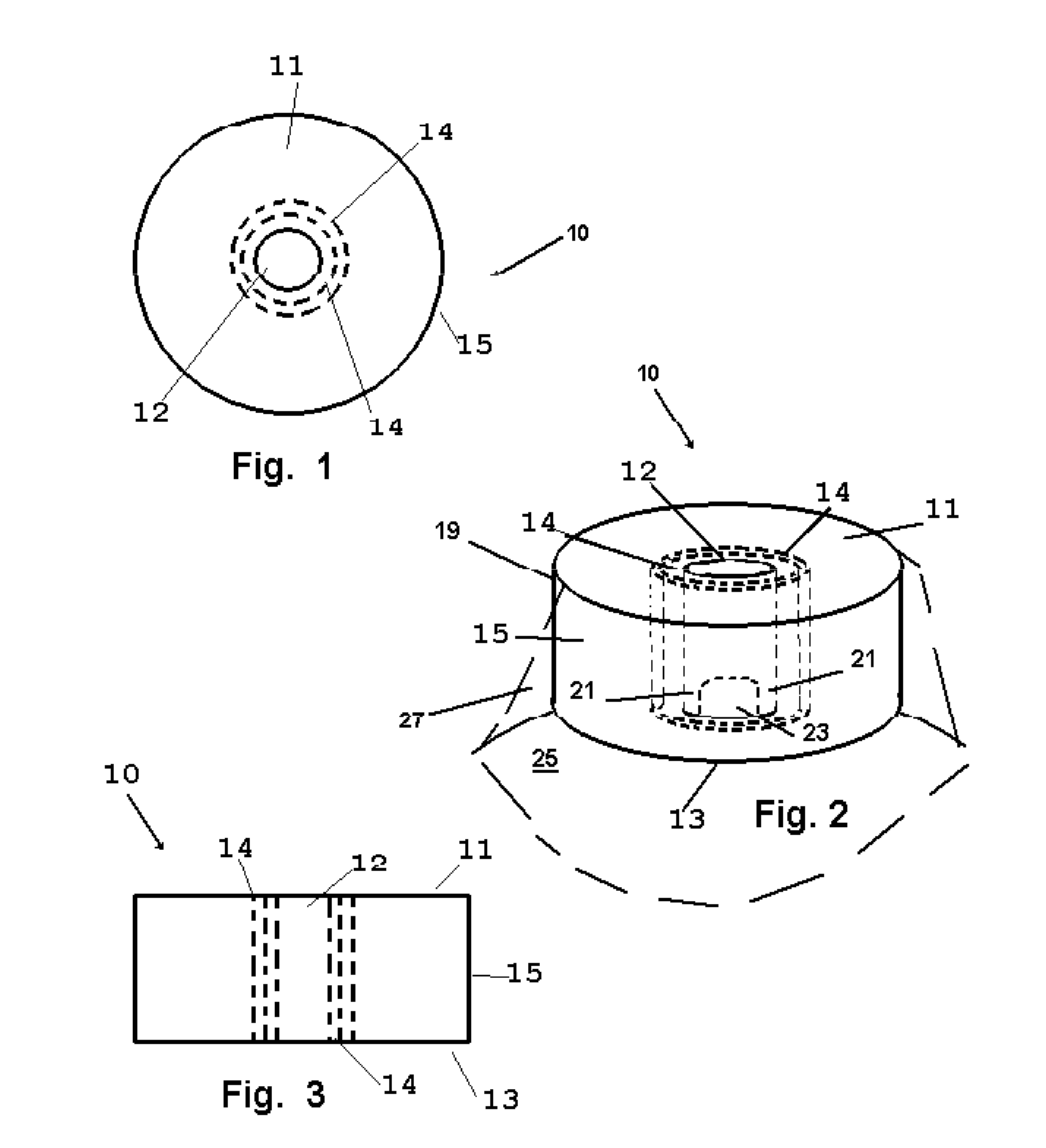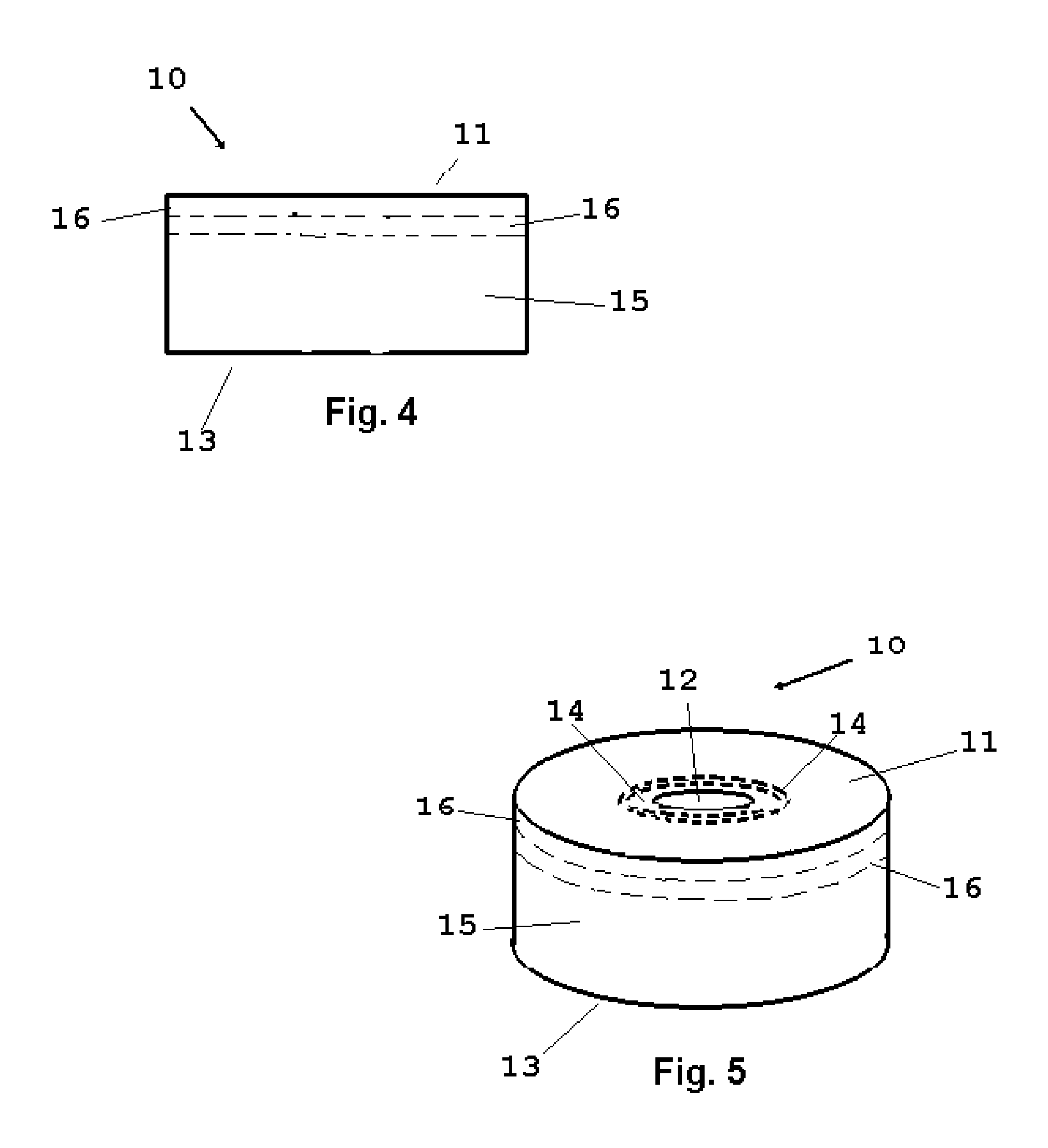Nipple/Areola Protective Cover
a protective cover and nipple technology, applied in the field of nipple/areola protective cover, can solve the problems of wicking moisture past the skin barrier, and reducing the use of valuable operating room for other surgeries. , to achieve the effect of convenient us
- Summary
- Abstract
- Description
- Claims
- Application Information
AI Technical Summary
Benefits of technology
Problems solved by technology
Method used
Image
Examples
Embodiment Construction
[0039]Now referring to drawings in FIGS. 1-8, wherein similar components are identified by like reference numerals, there is seen in FIG. 1 the device 10 depicting the axial cavity 12, defined by an annular sidewall surrounding the center axis of the axial cavity 12. Also shown are a first or top surface 11 and a sidewall 15 which defines the outer circumference and overall diameter of the device 10.
[0040]In the mode of the device 10 shown in FIGS. 1-3, a means to adjust the diameter of the axial cavity 12 is provided by one or a plurality of frangible portions of a central portion of the resilient member or body 19 which are removably engaged concentric cylindrical members 14. The material forming the body 19 being resilient, such as foam, it may be perforated or slit partially between the top and bottom surfaces to allow for the easy removal of the central portion formed by cylindrical members 14 removably attached to the body 19 in series, to enlarge the diameter of the axial cav...
PUM
 Login to View More
Login to View More Abstract
Description
Claims
Application Information
 Login to View More
Login to View More - R&D
- Intellectual Property
- Life Sciences
- Materials
- Tech Scout
- Unparalleled Data Quality
- Higher Quality Content
- 60% Fewer Hallucinations
Browse by: Latest US Patents, China's latest patents, Technical Efficacy Thesaurus, Application Domain, Technology Topic, Popular Technical Reports.
© 2025 PatSnap. All rights reserved.Legal|Privacy policy|Modern Slavery Act Transparency Statement|Sitemap|About US| Contact US: help@patsnap.com



